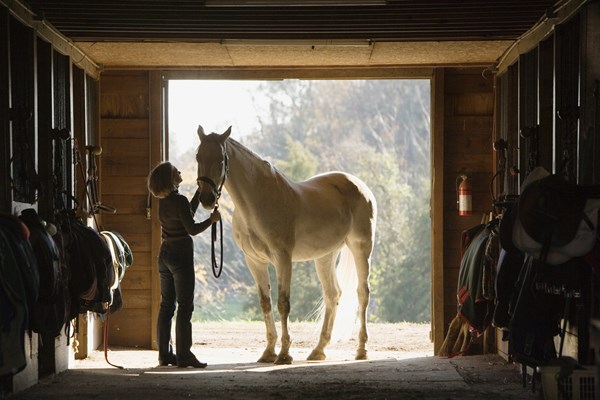 Credit: Thinkstock The Stable Management annual salary survey provides insights into the ownership and management of equine farms and stables.
Credit: Thinkstock The Stable Management annual salary survey provides insights into the ownership and management of equine farms and stables.Stable Management recently conducted its Annual Salary Survey to help you better understand the current trends in the business of running a farm or stable. Whether you are the owner or manager, you will find information that you can compare to your own operation, and statistics that might benefit your business.
Studying the results of the 2014 Stable Management Salary Survey and using the comparison to salary surveys in previous years can help you understand our industry. This is a snapshot of who is running the farms and stables across the country, what they are doing and how they are doing it. (Note that when “2013” or “2012” is listed in results, it is a comparison of this year’s salary survey with the surveys conducted in those years.)
While we know the economy is in recovery, the horse business has not finished recovering. Some horse businesses are seeing improvement, and some are still seeing declines.
The 2014 survey showed that business was up for 23.6% of those who have a farm/stable as their primary source of income. That’s a good sign! The survey showed that 32.3% had no change in business from 2013, which means they are holding steady. But 20% of those businesses were down 1-15% and 19.7% were down more than 15% from the previous year.
For those people who said their equine farms or stables were their secondary income, only 12.8% said business was up from 2013. However, 45.2% said their businesses were the same as last year. Unfortunately, 22.1% said they had seen 1-15% decline in business over the last year, and 18.2% had seen declines of more than 15%.
So what is costing these stable/farm owners the most to stay in business? Interestingly, the answer is the same for both segments: hay and feed.
For those who get their primary income from their equine businesses, 59% said hay/feed is their biggest expense. That was followed by labor at 27.9% and mortgage at 10.7%.
For those who have a secondary income from their stable/farm businesses, 68.7% said the biggest expense is hay/feed. That was followed by 14.9% saying labor was the biggest expense, and 8.6% saying their mortgage was their biggest expense.
What are these stables and farms charging to keep a horse? Flat rate boarding isn’t offered by 28.1% of those who have a primary income from their equine businesses, nor by 23.4% of those who have their farm/stable as a secondary income.
For those with a farm/stable as a primary business, 46.1% charge a flat rate board fee of $251-$500/month and 21.9% charge $501-750/month. On the opposite ends of the spectrum, 9.4% charge $751-$1,500 and 12.5% charge less than $250/month.
For those with a farm/stable as a secondary business, 46.8% charge $251-500/month and 9.9% charge $501-750/month. Of these equine businesses, 1.8% charge $701-$1,500/month in board and 17% charge less than $250/month.
So what do farms and stables charge extra for? Those with primary income from their equine businesses earn extra income beyond boarding fees by giving lessons, with 48.8% providing that service for a fee. Training horses was done by 31.5% of those facilities, and charging to haul/trailer horses was done by 16.5% of the businesses. Earning extra fees from bandaging/medication was noted by 12.6% of the facilities, and 8.7% said they charged extra for blanketing.
For those with an equine business as a secondary income, 26.6% charged for lessons; 22.3% charged to haul/trailer horses; 21.2% earned money from training horses; 12.4% charged for bandaging/medication; and 8.8% charged for blanketing.
It is interesting that a vast majority of those with primary or secondary income from a farm or stable business do not host or run horse shows. For those who have a primary income from their equine businesses, 79.8% do not have shows at all. Another 32.6% have one to five shows per year, while only 4.7% have more than five shows per year.
For those whose equine businesses provide a secondary income, 87.8% do not host or run shows, while 11.1% have one to five shows and fewer than 1% have more than five shows per year.
Click on the headline title to read the entire Stable Management 2014 Salary Survey article.


